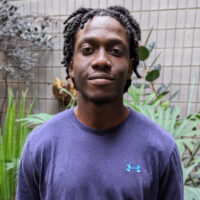
Relationship of Indels with Meiotic Recombination Sites in Maize
Meiotic recombination, a process that generates new combinations of alleles, is crucial for increasing genetic variation within species. Meiotic recombination is thought to be a very precise process but recent data suggest that it may actually be associated with the creation of indels (insertions and deletions) at recombination sites. To test this hypothesis, we used bioinformatic tools to map the distribution of indels at different meiotic recombination sites, including the sites of crossovers (COs) and DNA double-strand break (DSB), which initiate meiotic recombination. The DSB sites were identified in the Pawlowski lab via ChIP-seq with the RAD51 protein, which is a marker for DSB presence, while COs were detected with MLH3 ChIP-seq because MLH3 is a protein participating in CO formation. Indels, categorized as small (10bp-50bp), medium (100bp-500bp), and large (10kb-50kb), were sourced from Matt Hufford group’s (Iowa State University) maize indel analysis of 26 diverse inbred lines. (Science, 2021). Bedtools were used to find regions of overlap and without overlap (“cold spots”) between indels and recombination sites. We observed enrichment of small indels at CO sites, indicative of the mutagenicity of meiotic recombination in maize. We also found that DSB hotspots exhibit higher density of small indels than CO hotspots, reflecting the greater indel generation potential of DSB. This project demonstrates evidence of mutagenicity in a process previously understood to be an error free process, and it suggest that meiotic recombination is a significant source of genetic variation through indel formation.
I had the opportunity to participate in the BTI REU program at Cornell University, working in Dr. Pawlowski’s lab. During my time in the Pawlowski lab, I was immersed in a collaborative environment where I worked alongside individuals with diverse skills that complemented my own. I gained a wealth of bioinformatics techniques, from data analysis to computational modeling, which have equipped me with the tools necessary to tackle complex biological questions. Additionally, I had the chance to engage with faculty members across the campus, who provided invaluable guidance in navigating the process of finding a graduate program that aligns with my interests. The challenges I faced during this intensive program were significant, but they were also instrumental in my growth. Learning so much in a short period was daunting, but it pushed me to develop effective time management and problem-solving skills. Looking ahead, I am eager to continue my education and research in a graduate program that will allow me to further explore the intersections of biology and computational science.
